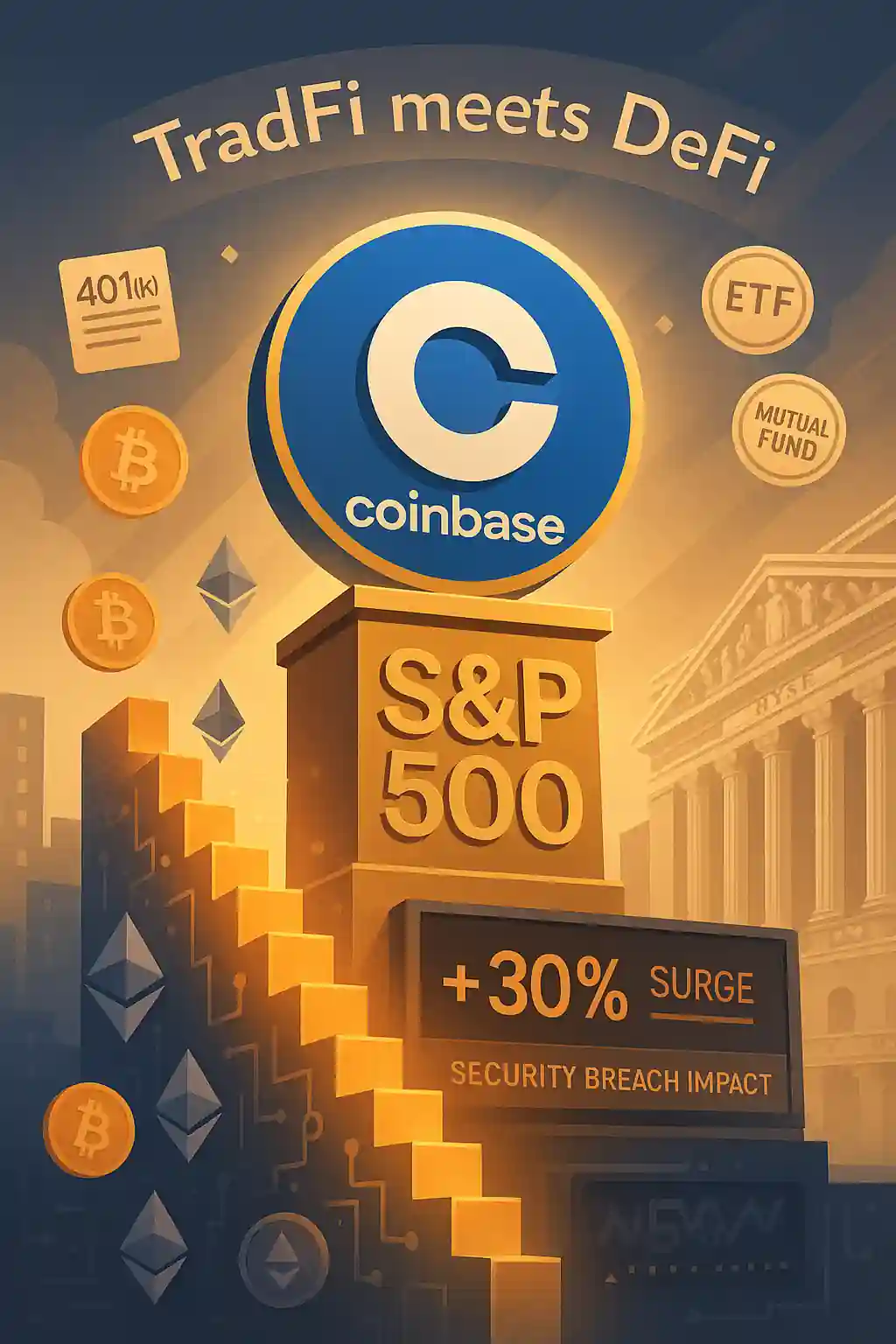Coinbase officially enters the S&P 500 Index
Coinbase, the largest U.S.-based crypto exchange, joins the S&P 500 today, replacing Discover Financial Services following its Capital One acquisition.
This marks a pivotal moment for both Coinbase and the broader crypto industry. The inclusion symbolizes crypto’s shift from outsider status to mainstream financial legitimacy.
With a market cap of $67 billion, Coinbase is no longer just a trading platform — it’s now part of the global financial framework.
What Coinbase’s inclusion means for investors
Index-tracking funds and active managers benchmarked to the S&P 500 are now required to purchase Coinbase stock.
This passive demand boosts visibility and potentially stabilizes Coinbase’s price over time. For retail investors with 401(k)s or mutual funds, this means indirect crypto exposure—whether intentional or not.
Shares of Coinbase have surged nearly 30% since the announcement, despite the emergence of a recent hacking incident that slightly tempered gains.
A new phase for Coinbase and crypto integration
Originally focused on retail trading, Coinbase has evolved into a full-stack crypto infrastructure provider for institutions and developers.
Its ability to meet S&P requirements for governance, liquidity, and profitability highlights how much Coinbase has matured amid industry volatility and regulatory crackdowns.
This inclusion reflects crypto’s institutional acceptance—not just Coinbase’s individual success.
Risks still remain for Coinbase investors
While the S&P 500 milestone is significant, Coinbase continues to rely on trading volumes, which fluctuate heavily in crypto’s unpredictable cycles.
Analysts warn that index inclusion reflects structural change, not guaranteed long-term growth. Volatility and market downturns could still affect Coinbase‘s revenue and stock performance.
Even with more institutional exposure, the company remains vulnerable to shifts in crypto activity.
A cultural turning point for crypto and Wall Street
Meryem Habibi, CRO at Bitpace, called Coinbase’s entry a “cultural shift,” demonstrating that crypto-native companies can achieve systemic relevance.
Like early fintech disruptors, Coinbase is no longer outside the system—it is helping redefine it. Its infrastructure is being woven into the fabric of modern financial markets.
Rather than threatening traditional finance, Coinbase signals a merging of worlds: TradFi meets DeFi.
What this means for the future of crypto firms
Coinbase’s S&P 500 membership sets a precedent: crypto companies can graduate to the highest levels of market credibility.
This is not just about price or performance—it’s about perception. Institutional investors now see Coinbase as a vital part of the global financial engine.
As more crypto firms evolve, Coinbase has become the blueprint for how to achieve mainstream success while still staying rooted in digital finance.




